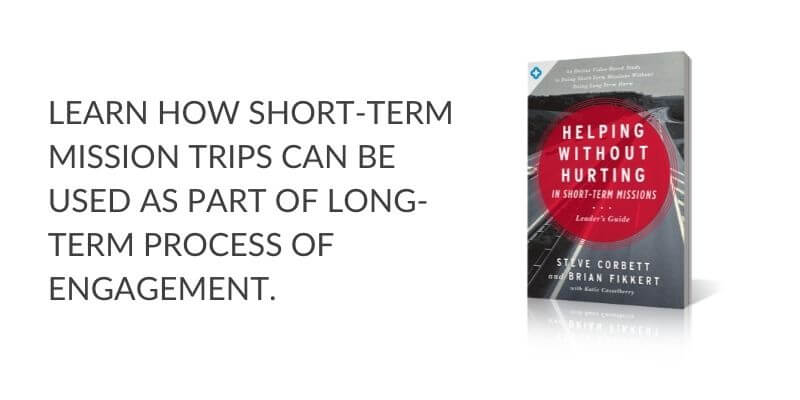Short-Term Missions that Avoid Long-Term Harm—Part 2
Adapted from Helping Without Hurting in Short-Term Missions: Leaders’ Guide, 7-11.
Last week, we shared some cautions about the real harm that poorly-thought-through short-term mission efforts can cause. This is a real issue with real-world consequences.
We can’t emphasize enough that churches and ministries from wealthy countries need to work hard to ensure that they do two key things: A) Prioritize the goals and needs of local churches and long-term ministries that would receive any teams, and B) Focus more on funding good, long-term work over short-term trips for short-term trips’ sake.
That said, it doesn’t have to be this way. Short-term teams can be a vital, healthy part of long-term ministry. They can encourage and provide care for local missionaries and pastors who are present in the community over the long haul. They can introduce participants to new ways of seeing the world, and inspire them to greater generosity and other paths of ministry in their own lives.
Doing It Well
Steve Corbett, coauthor of When Helping Hurts and the Chalmers Center’s community development specialist shares this experience of receiving a team that loved him and the community he served well.
During my time working with a Christian relief and development organization, I had the opportunity to see short-term mission trips up close and personal. One team was particularly memorable.
The group, made up of mostly adults, came with such a spirit of humility. They came with open minds and hearts, wanting to better understand poverty and poverty alleviation in the South American region in which we worked. They visited and stayed in several communities.
They met with national field staff, pastors, teachers, committee leaders, and community members. They attended church events and were full participants in them, but they did not feel the need to lead, teach, or preach. In fact, they politely declined invitations to do so, deferring to the leadership of local pastors. They came to simply be with us.
I personally knew some of the trip participants, and I had a chance to follow up with their stories. Even as they returned home, they stood with their brothers and sisters on the field. Most of them became dedicated advocates for the work we were doing, and they supported our work through their financial generosity. They unleashed our local staff to engage in transformational work that simply couldn’t have happened otherwise. Their trip was a huge success.
Thinking of my time with them still puts a smile on my face.
What Is Success?
On one level, success for short-term missions looks like churches and ministries doing more trips like this one. It also means challenging misunderstandings about the appropriate and realistic purposes of trips, focusing on a long-term process of learning and engagement rather than executing particular tasks.
On another level, we believe that part of improving short-term trips actually involves taking fewer of them, dedicating more of our resources to long-term missions and poverty alleviation work within a community.
We long to see more and more churches and individuals engaging with, praying for, and supporting effective ministries and their staff, missionaries, or community development workers. It means more and more churches turning loose their brothers and sisters who work in low-income communities every day, supporting them as they do work that outsiders could never accomplish in two weeks.
The process of moving churches and ministries toward long-term engagement both requires and creates a deeper understanding of effective poverty alleviation approaches. It fosters an appreciation for diversity and differences in culture. It instills a deep respect for the body of Christ across miles and languages. And it develops humility in comparably affluent churches and individuals as we recognize the way all of us are dependent on the healing work of Jesus Christ in our lives.
When done well, a short-term trip itself is just one piece of the broader, long-term journey of learning and engaging with God’s work in the world. Leading participants through that process can be a powerful way to help them understand—and advocate within their congregations for—redefining poverty and poverty alleviation in their own communities.
Through this type of transformation, both sending churches and churches across the globe can better share the gospel in word and deed. Ultimately, there is no greater success than the local body of Christ declaring and demonstrating the hope of Jesus Christ’s reconciling work.


